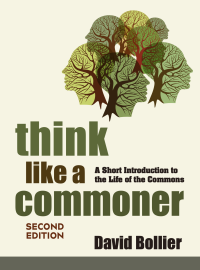A century ago, in 1905, there were more than 6,500 distinct varieties of apples to eat, reports Verlyn Klinkenborg in the New York Times. People had their own favorite apples when it came to cooking and eating. They would use different ones for making pies, cider and apple sauce. They could choose from an exotic array of apples with names like Scollop Gillyflower, Red Winter Pearmain, Kansas Keeper.
Now, Klinkenborg writes, "only 11 varieties make up 90 percent of all the apples sold in this country, and Red Delicious alone counts for nearly half of that." For those who wonder what an enclosure of the commons looks like, this is a prime example.

As market forces came to dominate the production and distribution of apples in the 20th Century, natural varieties that we once took for granted have essentially disappeared. Some apples were abandoned because they have thin skins and bruise easily, making them less amenable to mass commerce. Others may be too small or serve only a tiny niche of the market. Red Delicious probably prevailed in the marketplace because it was so big and shiny (thanks in part to wax).
The point is that our modern agriculture system, driven by large-scale efficiencies and commercial motivations, had no interest in diversity and difference and the idiosyncratic.
Fortunately, the fantastic varieties of apples that we once enjoyed are not gone forever, Klinkenborg points out. Many of the old apple trees still exist, and they function as a kind of library of lost and abandoned varieties of apples. In one field and another homestead and a third abandoned lot, there are apple trees that still produce, silent witnesses to the biodiversity of apples that was once normal.
Klinkenborg notes that "researchers from the National Center for Genetic Resources Preservation have been studying genetic markers in 280 venerable apple trees growing on old farmsteads in the Southwest. Some came from commercial nurseries, others from agriculture experiment stations, but most were unique."
It’s sad to think how we modern-day consumers have become acclimated to such a small stock of standard apples. In a sense, we have become creatures conditioned by market enclosure. Our tastes have become as bland and generic as the food we eat.
One of the great animating goals of the Slow Food movement is to recover the natural diversity of our local foods. I like to think that as we become more appreciative of the rich diversity of nature and its local manifestations, we will be doing a lot to re-build the commons.











Recent comments